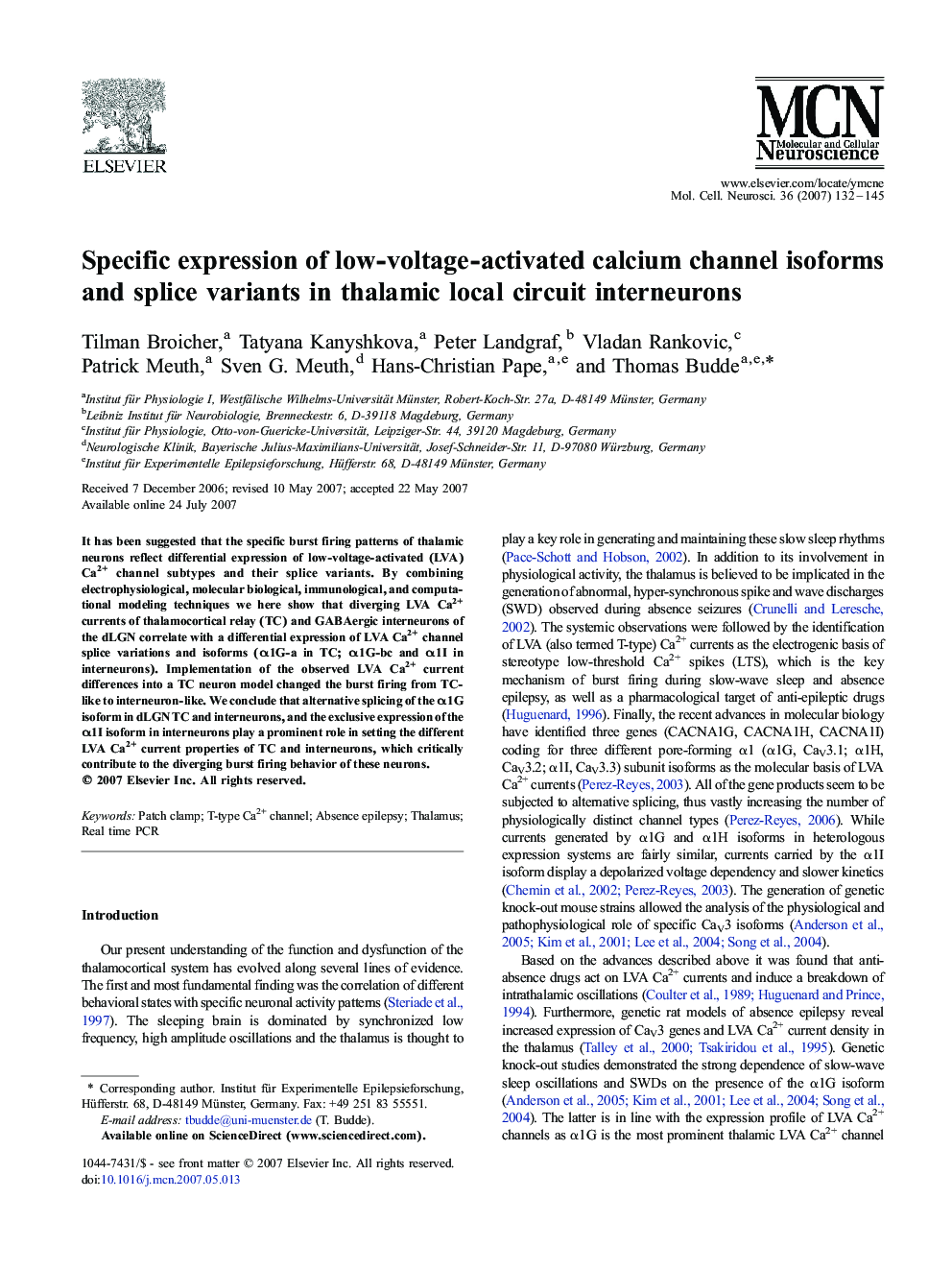| Article ID | Journal | Published Year | Pages | File Type |
|---|---|---|---|---|
| 2199201 | Molecular and Cellular Neuroscience | 2007 | 14 Pages |
It has been suggested that the specific burst firing patterns of thalamic neurons reflect differential expression of low-voltage-activated (LVA) Ca2+ channel subtypes and their splice variants. By combining electrophysiological, molecular biological, immunological, and computational modeling techniques we here show that diverging LVA Ca2+ currents of thalamocortical relay (TC) and GABAergic interneurons of the dLGN correlate with a differential expression of LVA Ca2+ channel splice variations and isoforms (α1G-a in TC; α1G-bc and α1I in interneurons). Implementation of the observed LVA Ca2+ current differences into a TC neuron model changed the burst firing from TC-like to interneuron-like. We conclude that alternative splicing of the α1G isoform in dLGN TC and interneurons, and the exclusive expression of the α1I isoform in interneurons play a prominent role in setting the different LVA Ca2+ current properties of TC and interneurons, which critically contribute to the diverging burst firing behavior of these neurons.
